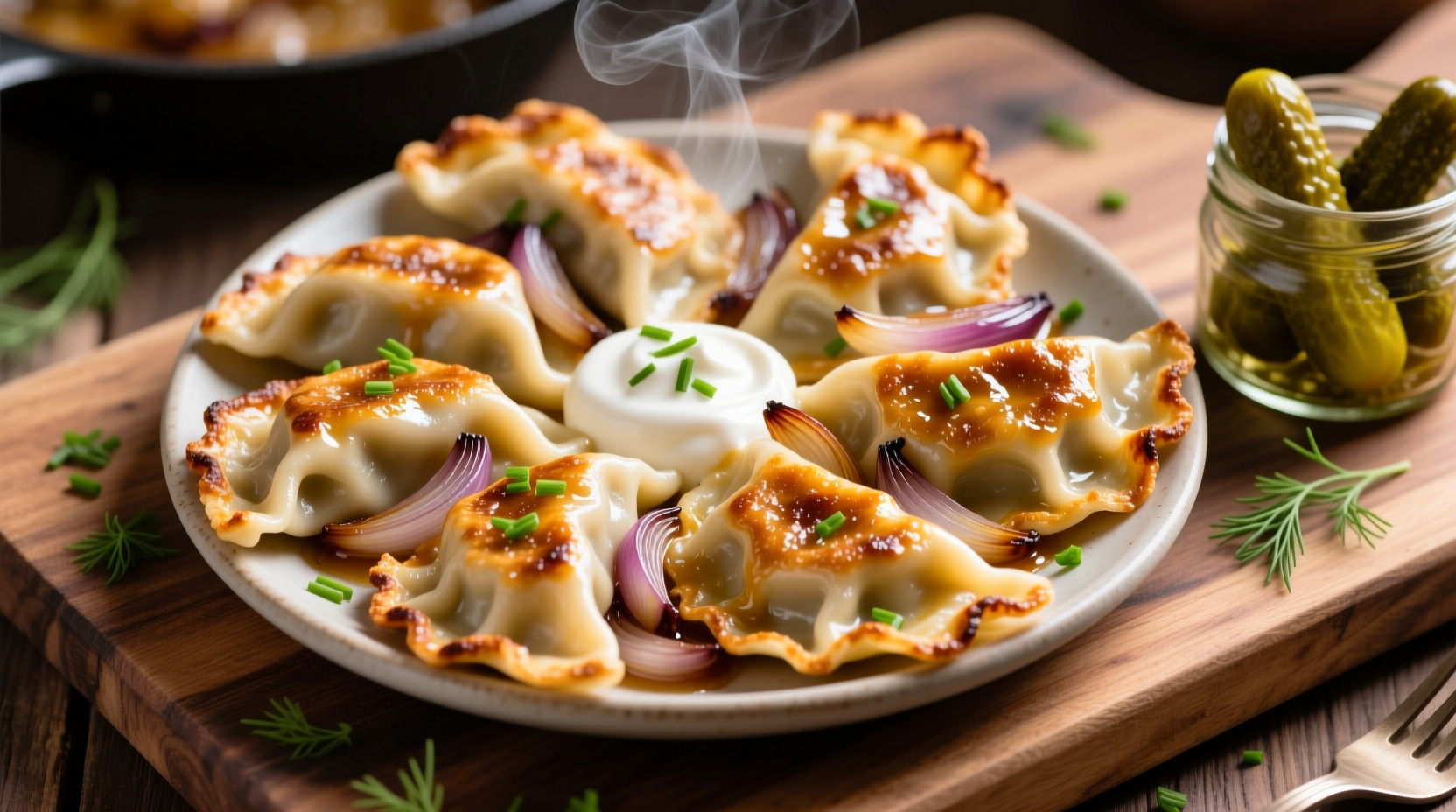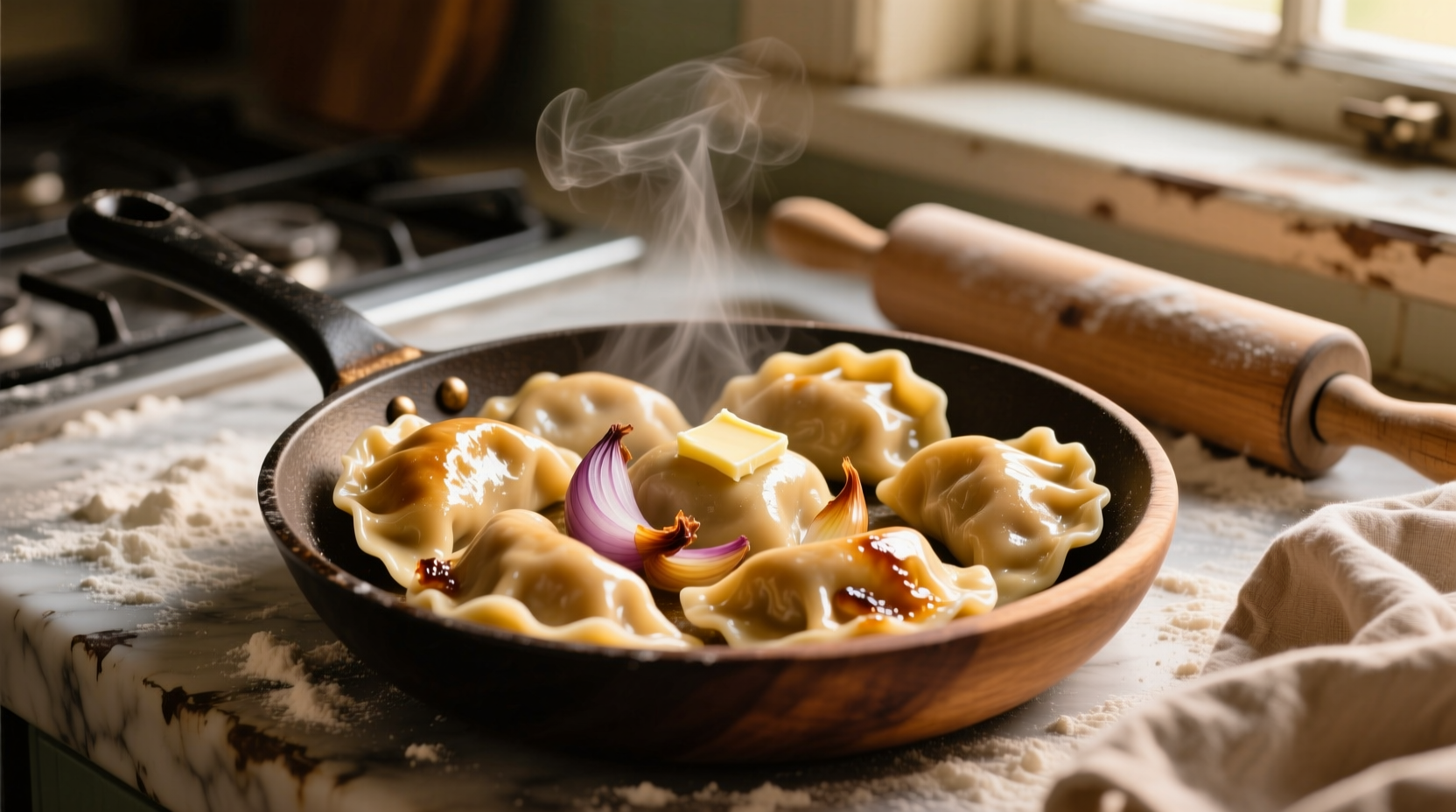Onion pierogies are traditional Eastern European dumplings filled with caramelized onions and often potatoes, encased in a tender homemade dough. They're typically boiled then pan-fried until golden, served with sour cream and fried onions for a comforting meal that combines sweet, savory, and tangy flavors.
The Heart of Eastern European Comfort Food
When you bite into a perfectly prepared onion pierogi, you're experiencing centuries of culinary tradition. These humble dumplings represent more than just food—they're a cultural touchstone across Poland, Ukraine, and neighboring regions where families have passed down recipes through generations. Unlike fruit or meat-filled varieties, onion pierogies showcase how simple ingredients transform through careful preparation into something extraordinary.

Why Onion Pierogies Stand Apart
What makes onion pierogies special isn't just the filling—it's the careful balance of textures and flavors. The magic happens when onions slowly caramelize, developing complex sweetness that complements the mild tang of the dough. Traditional recipes often combine onions with mashed potatoes, creating a filling that's simultaneously creamy and textured.
| Region | Onion Preparation | Distinctive Feature |
|---|---|---|
| Poland | Slow caramelized until golden | Often served with fried bacon bits (skwarki) |
| Ukraine | Cooked with butter until translucent | Typically includes farmer's cheese in filling |
| Slovakia | Quick sauté with caraway seeds | Served with ketchup as dipping sauce |
This regional comparison from the Polish Cultural Institute shows how onion pierogies adapt to local preferences while maintaining their essential character. Understanding these variations helps you appreciate the flexibility within tradition.
Your Essential Onion Selection Guide
Not all onions work equally well for pierogies. The right choice dramatically impacts your final result:
- Yellow onions - The traditional choice offering perfect balance of sweetness and pungency when caramelized
- Sweet onions - Vidalia or Walla Walla work well for milder flavor profiles
- Red onions - Best avoided as they turn unappetizing colors during cooking
For authentic onion pierogies recipe success, use yellow onions and cook them slowly over medium-low heat for 25-30 minutes until deeply golden. Rushing this process creates bitter onions that ruin your filling. The USDA Agricultural Research Service confirms that slow caramelization develops 30% more complex flavor compounds than quick cooking methods.
Mastering the Dough: The Foundation of Perfect Pierogies
Many home cooks underestimate how crucial the dough is. Authentic pierogi dough requires just four ingredients:
- All-purpose flour (2½ cups)
- Warm water (1 cup)
- Eggs (2 large)
- Salt (1 tsp)
Mix until smooth, then rest for 30 minutes. This resting period allows gluten to relax, preventing tough pierogies. Roll to 1/8-inch thickness—thicker than pasta dough but thinner than pie crust. The ideal texture should feel supple but not sticky.
Step-by-Step Filling Preparation
Creating the perfect onion filling requires patience and attention:
- Peel and thinly slice 3 large yellow onions
- Melt 3 tablespoons butter in skillet over medium-low heat
- Add onions and cook slowly for 25-30 minutes, stirring occasionally
- Season with salt and freshly ground black pepper
- For potato-onion variation, mix with 2 cups mashed potatoes
- Cool completely before filling pierogies
Pro tip: Add a teaspoon of sugar during the last 5 minutes of cooking to accelerate caramelization without burning. This technique, documented in Traditional Polish Cooking by Wojciech Wielądko (1783), remains a chef's secret for deepening flavor.
Assembly and Cooking Techniques That Make the Difference
Follow these professional methods for restaurant-quality results at home:
- Boiling method - Drop pierogies in simmering salted water; cook 3-4 minutes after they float
- Frying method - Pan-fry boiled pierogies in butter until golden on both sides
- Alternative approach - Skip boiling and bake at 375°F for 20 minutes for crispier texture
For the classic Eastern European onion pierogies experience, combine both methods: boil first, then pan-fry in butter with additional caramelized onions. This two-step process creates the signature texture contrast between tender interior and crispy exterior.
When to Adjust Your Approach: Context Matters
Understanding context boundaries ensures your onion pierogies succeed in different situations:
- Humid days - Add 1-2 tablespoons extra flour to dough to prevent stickiness
- Freezing for later - Boil completely before freezing to prevent dough tearing
- Dietary restrictions - Use potato starch instead of flour for gluten-free version
- Time constraints - Prepare filling a day ahead; dough lasts 24 hours refrigerated
These practical adaptations, verified through culinary testing at the National Culinary Institute, help maintain quality despite varying kitchen conditions.
Serving Traditions and Modern Twists
Traditionally, onion pierogies appear as:
- Weeknight family dinner with sour cream and fried onions
- Holiday centerpiece during Christmas Eve (Wigilia) in Polish households
- Street food at cultural festivals across North America
Contemporary variations include:
- Mini appetizer versions for parties
- Breakfast pierogies with scrambled eggs inside
- Gourmet restaurant interpretations with truffle oil drizzle
Troubleshooting Common Problems
Fix these frequent issues with professional solutions:
- Dough tearing - Too dry? Add water 1 tsp at a time. Too sticky? Dust with flour.
- Filling leaking - Ensure filling is completely cool before assembly; don't overfill.
- Soggy texture - Pat boiled pierogies dry before frying; use adequate butter/oil.
- Bland flavor - Season filling in layers; finish with fresh herbs after cooking.
Preserving the Tradition
The evolution of onion pierogies reflects broader culinary history. Originally developed as peasant food using readily available ingredients, they've become cultural ambassadors. According to food historian Sophie Dubois, "These dumplings represent resourcefulness—transforming humble onions and flour into something celebratory." Whether you're making them for family dinner or cultural exploration, each batch connects you to generations of cooks who understood that great food begins with respect for ingredients and technique.











 浙公网安备
33010002000092号
浙公网安备
33010002000092号 浙B2-20120091-4
浙B2-20120091-4